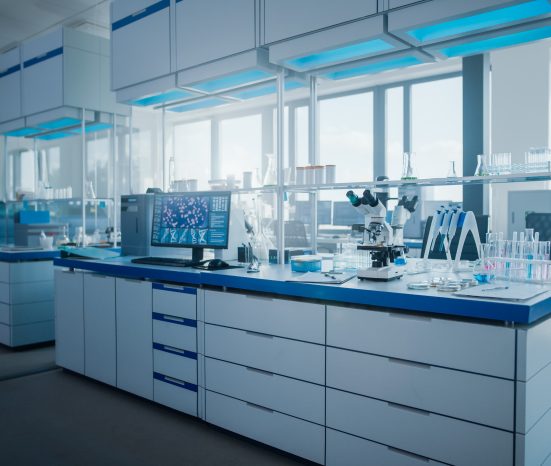Biotechnology
What is Biotechnology?
Biotechnology is the use of biology to solve problems and create useful products. It encompasses a multidisciplinary field that integrates natural sciences and engineering sciences. Here are some key points:
- Historical Context: People have been harnessing biological processes for thousands of years. Early examples include making bread, alcoholic beverages, and cheese using microorganisms. However, modern biotechnology emerged in the 1960s and ’70s with molecular and cellular technologies
- Applications: The most prominent area of biotechnology involves genetic engineering to produce therapeutic proteins and other drugs. Biotechnology also extends to areas like agriculture, environmental conservation, and industrial processes.
- Recombinant DNA Technology: For over a decade, the biotechnology industry was dominated by recombinant DNA technology. This technique involves splicing a gene (often a human gene) into production cells (e.g., yeast, bacteria, or mammalian cells) to produce proteins in volume. The U.S. Supreme Court ruled in 1980 that live human-made microorganisms are patentable subject matter, allowing companies to acquire patents on genetically engineered organisms.
In summary, biotechnology plays a crucial role in advancing medicine, agriculture, and various other fields by leveraging biological processes and genetic manipulation.
Biotechnology and the Aerospace Industry
Biotechnology plays a significant role in the aerospace industry, contributing to innovation, sustainability, and efficiency. For example:
- Sustainable Propulsion Technologies: The aerospace industry aims to achieve net-zero CO₂ emissions by 2050. To accomplish this, companies are actively developing innovative designs and sustainable propulsion technologies. Biomimicry, or biologically inspired engineering, provides valuable insights for designing lighter and more fuel-efficient aircraft.
- Space Exploration and Biotechnology: As we prepare for long-distance space travel and life on Mars, biotechnology becomes essential. Spaceships can no longer rely solely on Earth’s constant supply. Biotechnology enables self-sufficiency by creating closed-loop systems for food, water, and other essentials during extended space missions.
- Astrobiotechnology: Space biotechnology applies modern biology tools to advance space exploration. It involves using biological processes and materials to enhance spacecraft design, life support systems, and resource utilization.
In summary, biotechnology contributes to sustainable aviation and space exploration, making it a crucial field for the aerospace industry’s future.
Evolution of Biotechnology

The evolution of biotechnology began with the early use of fermentation processes in ancient civilizations to produce food and beverages. The field advanced significantly in the mid-20th century with the discovery of the structure of DNA and the development of recombinant DNA technology, which allowed for the manipulation of genetic material. In the late 20th and early 21st centuries, advancements in genomics, proteomics, and bioinformatics revolutionized biotechnology, leading to breakthroughs in medicine, agriculture, and environmental science. Today, biotechnology continues to evolve rapidly with innovations in CRISPR gene editing, synthetic biology, and personalized medicine, promising transformative impacts on health and sustainability.
Aerospace & Biotechnology in Future
In the future, the integration of biotechnology in aerospace holds promise for advancing materials science and human health in space exploration. Biotechnological innovations could lead to the development of lightweight and durable materials suitable for spacecraft and habitats, enhancing mission efficiency and safety. Furthermore, advancements in biomedicine and life sciences could enable the creation of personalized medical treatments and diagnostic tools tailored for astronauts, addressing health challenges during extended space missions. Collaborations between aerospace and biotechnology sectors are expected to drive innovation, pushing the boundaries of both fields to new frontiers.

Frequently Asked Questions
Common questions and answers pertaining to biotechnology, especially in regards to aviation.
How is biotechnology used in aviation?
Biotechnology in aviation involves the development of biofuels from renewable sources such as algae and biomass, which aim to reduce carbon emissions compared to traditional jet fuels.
What are the benefits of biofuels in aviation?
Biofuels offer potential benefits such as lower greenhouse gas emissions, reduced dependency on fossil fuels, and compatibility with existing aircraft engines and infrastructure.
How are biotechnological advancements influencing aircraft materials?
Biotechnological advancements are exploring novel materials derived from biomaterials and composites, aiming to create lightweight, strong, and environmentally sustainable materials for aircraft construction.
What role does biotechnology play in aircraft maintenance and safety?
Biotechnology plays a role in developing advanced materials resistant to corrosion and wear, improving the durability and safety of aircraft components. Additionally, biotechnological innovations in sensors and diagnostics could enhance maintenance procedures and safety inspections.
What are the challenges in implementing biotechnology in aviation?
Challenges include scaling up biofuel production to meet aviation demand, ensuring the sustainability and economic viability of biofuels, and addressing regulatory and certification requirements for new biotechnological materials and technologies in aircraft manufacturing.
Video Explanation
The video below will provide more information as to how this technology works
Example Industry User

NASA leverages biotechnology to advance its space exploration and research missions, focusing on health, sustainability, and life sciences. By utilizing biotechnological innovations, NASA aims to improve astronaut health through better medical treatments, nutritional solutions, and disease prevention strategies. Additionally, biotechnology helps NASA develop sustainable life support systems and study the effects of space travel on biological organisms. This relationship highlights NASA’s commitment to integrating cutting-edge biotechnology to enhance human space exploration and ensure long-term missions’ success.
Further Resources
Below are some external links to further information on this technology.





